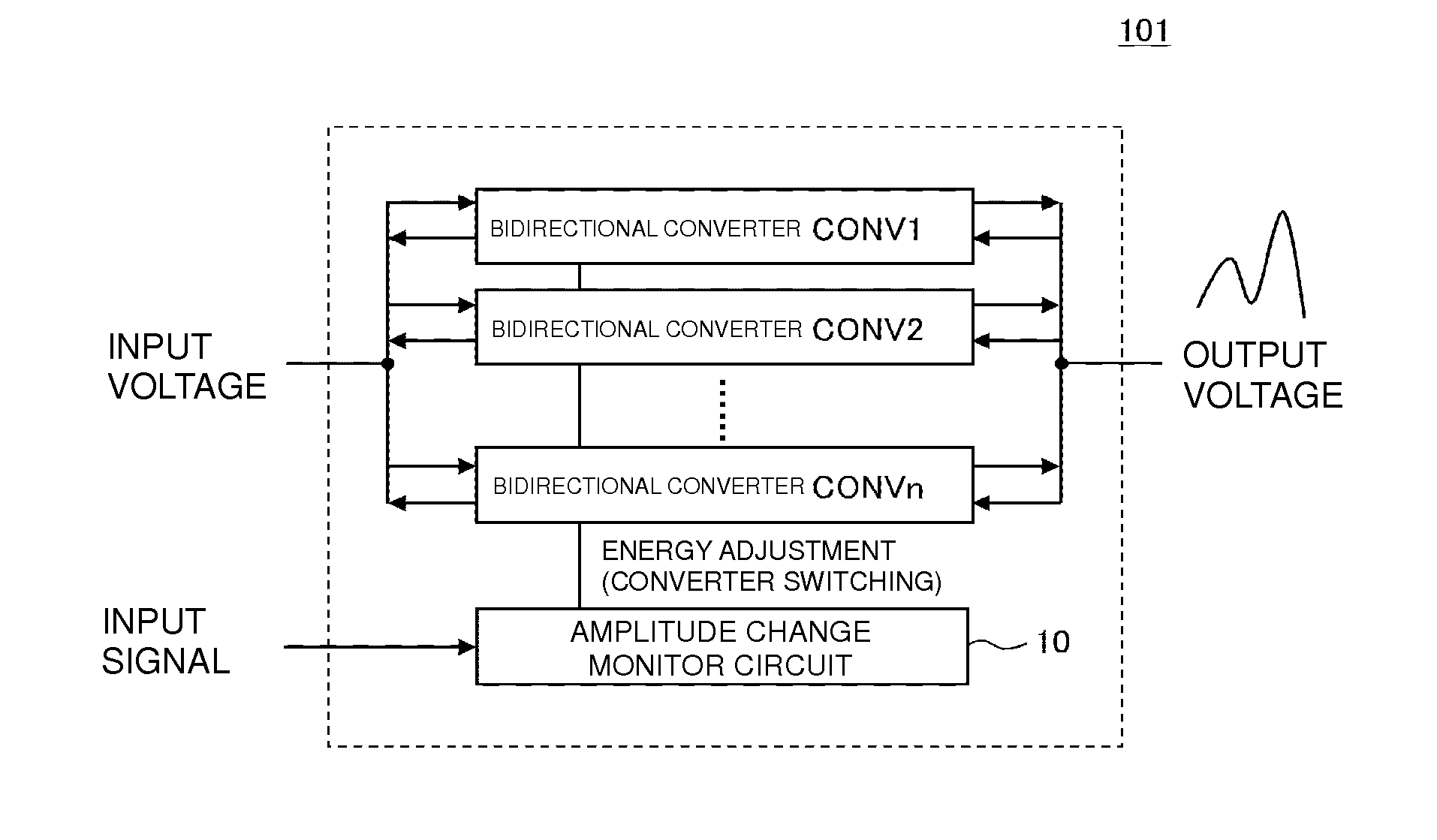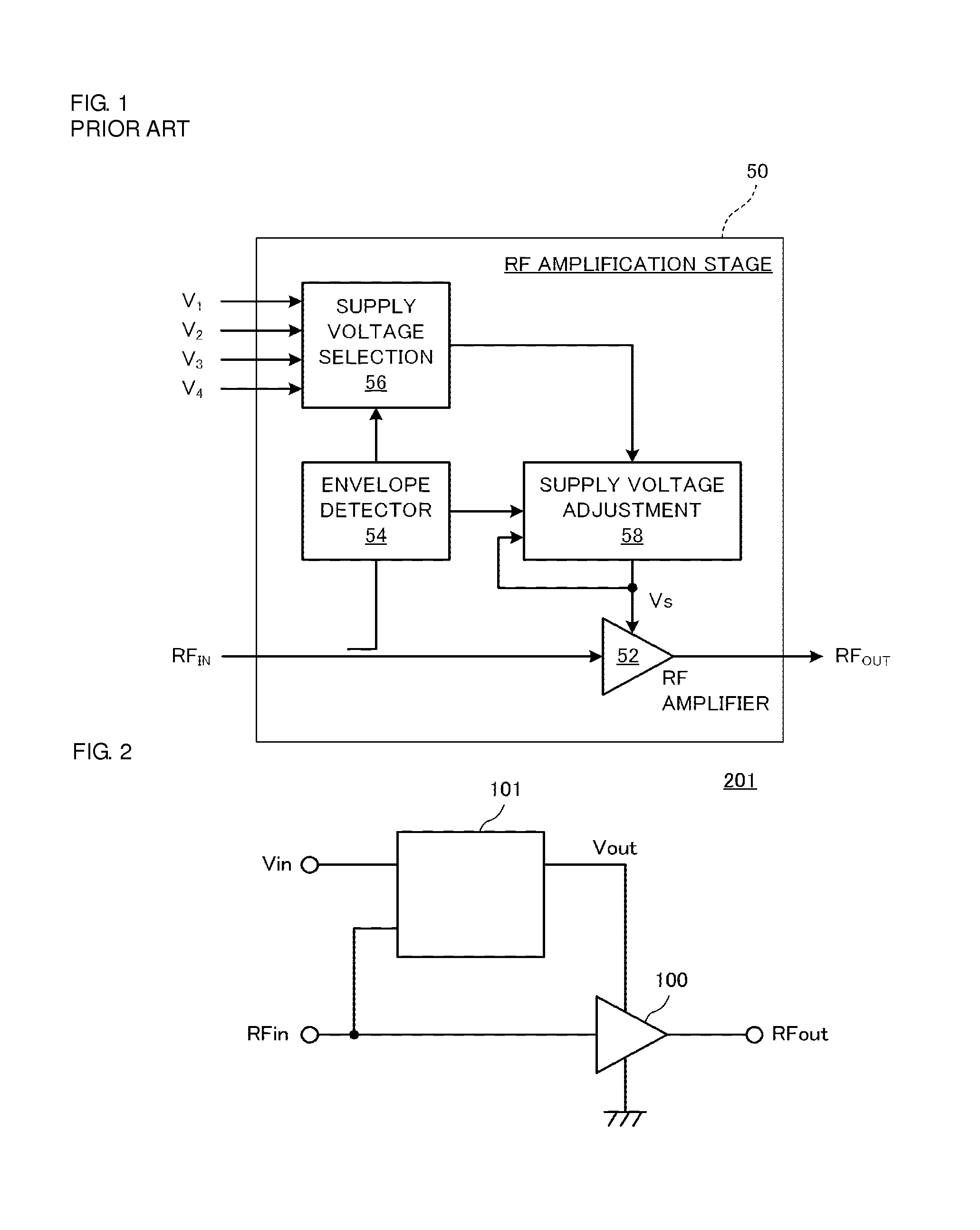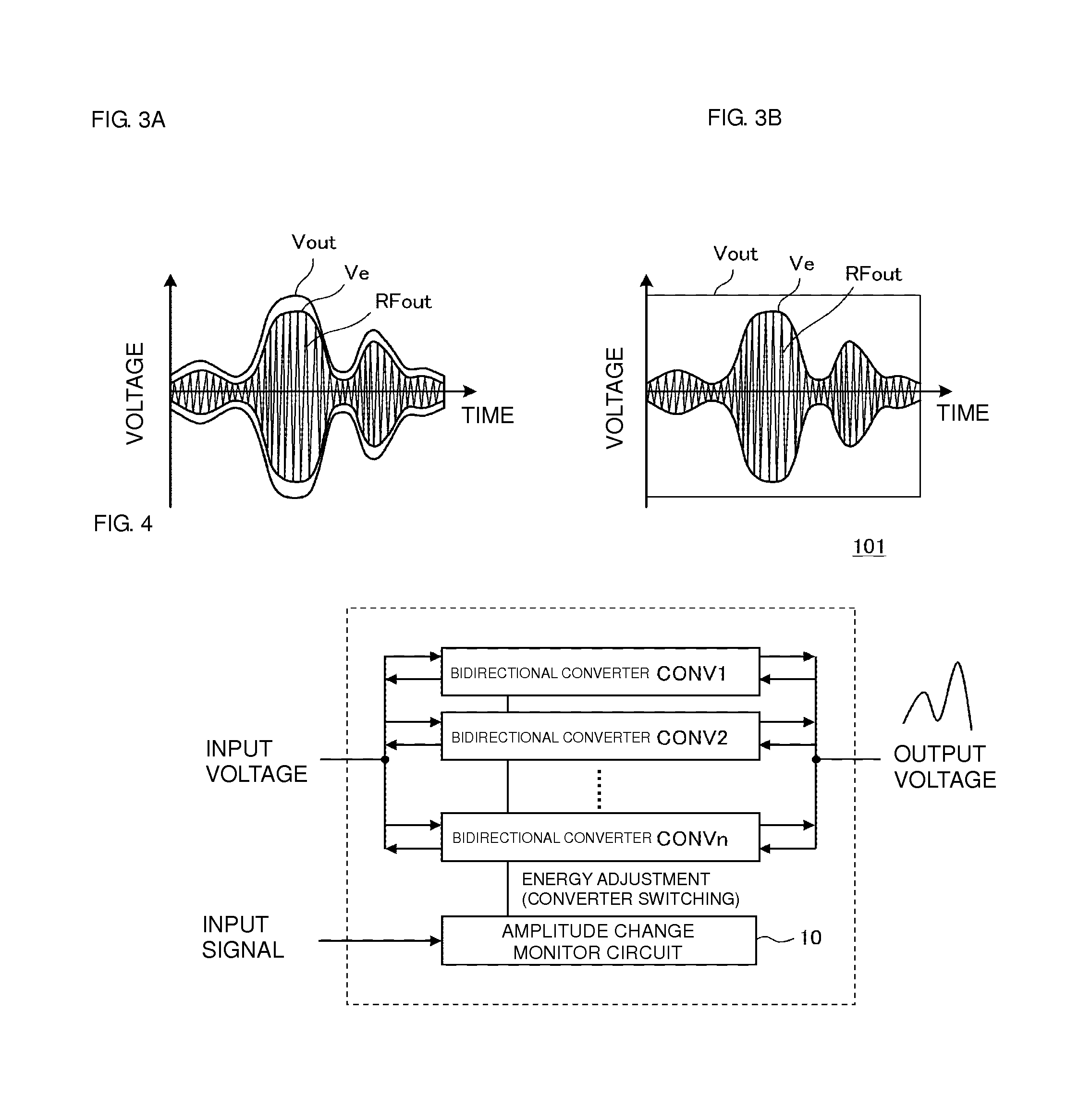Power supply device for high frequency power amplification circuit and high frequency power amplification device
a power supply device and high frequency power amplification technology, applied in the direction of electric variable regulation, process and machine control, instruments, etc., can solve the problems of high speed switching, distortion in waveform, complex circuit and extremely complex control, etc., to achieve high speed control, secure a large dynamic range, and high precision
- Summary
- Abstract
- Description
- Claims
- Application Information
AI Technical Summary
Benefits of technology
Problems solved by technology
Method used
Image
Examples
first preferred embodiment
[0050]FIG. 2 is a diagram illustrating the relationship among a power supply device 101 for a high frequency power amplification circuit, a high frequency power amplification device 201, and a high frequency power amplification circuit 100 according to a first preferred embodiment of the present invention.
[0051]The high frequency power amplification circuit 100 receives a high frequency signal RFin as an input, amplifies the power thereof, and outputs a high frequency power signal RFout. The power supply device 101 for a high frequency power amplification circuit receives an input power supply voltage Vin as an input and detects an amplitude change (envelope) of the high frequency signal RFin. The power supply device 101 then varies an output voltage Vout so as to follow the amplitude change. The high frequency power amplification circuit 100 operates with the output voltage Vout of the power supply device 101 for a high frequency power amplification circuit serving as a power suppl...
second preferred embodiment
[0058]FIG. 7 is a block diagram illustrating the configuration of a power supply device 102 for a high frequency power amplification circuit according to a second preferred embodiment of the present invention. The plurality of bidirectional converters CONV1, CONV2, . . . , CONVn are provided between the input section for the input voltage and the output section for the output voltage. Each of these bidirectional converters is a converter that is capable of supplying and regenerating an electric charge. Right and left arrows at the input and output sections indicate the energy transfer directions. The amplitude change monitor circuit 10 receives, as an input, an input signal, which is an amplitude change signal (envelope) of a high frequency signal. The amplitude change monitor circuit 10 then controls the supply and regeneration of electric charges in the bidirectional converters CONV1, CONV2, . . . , CONVn so that the output voltage follows the input signal. An output side energy s...
third preferred embodiment
[0061]FIG. 8 is a block diagram illustrating the configuration of a power supply device 103 for a high frequency power amplification circuit according to a third preferred embodiment of the present invention. The plurality of bidirectional converters CONV1, CONV2, . . . , CONVn are provided between the input section for the input voltage and the output section for the output voltage. Each of these bidirectional converters is a converter that is capable of supplying and regenerating an electric charge. Right and left arrows at the input and output sections indicate the energy transfer directions. The amplitude change monitor circuit 10 receives, as an input, an input signal, which is an amplitude change signal of a high frequency signal. The amplitude change monitor circuit 10 then controls the supply and regeneration of electric charges in the bidirectional converters CONV1, CONV2, . . . , CONVn so that the output voltage follows the amplitude change of the high frequency signal. In...
PUM
 Login to View More
Login to View More Abstract
Description
Claims
Application Information
 Login to View More
Login to View More - R&D
- Intellectual Property
- Life Sciences
- Materials
- Tech Scout
- Unparalleled Data Quality
- Higher Quality Content
- 60% Fewer Hallucinations
Browse by: Latest US Patents, China's latest patents, Technical Efficacy Thesaurus, Application Domain, Technology Topic, Popular Technical Reports.
© 2025 PatSnap. All rights reserved.Legal|Privacy policy|Modern Slavery Act Transparency Statement|Sitemap|About US| Contact US: help@patsnap.com



